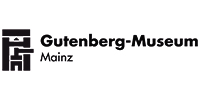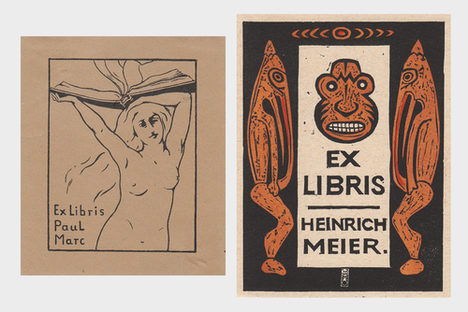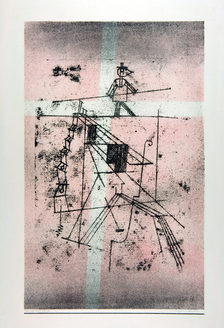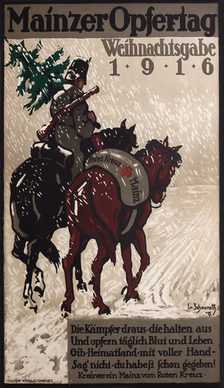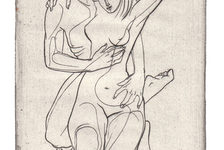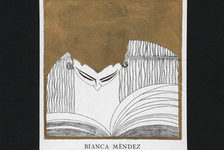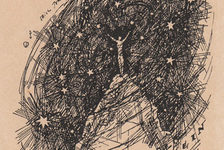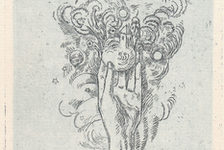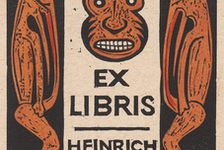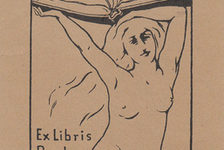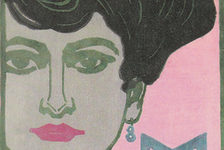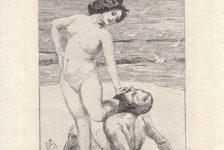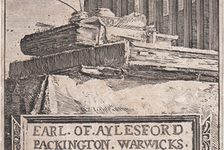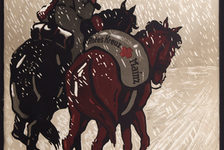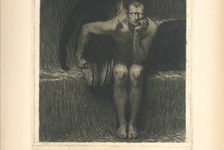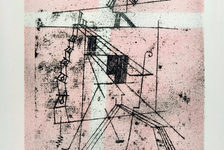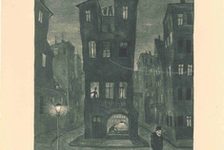Prints and bookplates
The graphic arts collection of the Gutenberg Museum features more than 20,000 individual sheets and around 4,000 posters, constituting an impressive representation of artistic, artisan and print technology methods as well as historical book themes. The collection includes one of the world's most extensive public special bookplate collections of around 120,000 miniature graphics including those of famous owners such as Giorgio Armani and Albert Einstein.
Prints & Graphic arts
The collection focuses on graphic arts by artists that employed exceptional printing methods. It also has additional focal points that complement the holdings and mission of the museum – images that document individuals working in print shops and publishing houses, and technical illustrations that present work processes and historical phases of print history. In addition, different work samples illustrate graphic (print) techniques.
The collection contains large bequests and bestowals with a specific research aim. The bequests include the collection of the print researcher Otto M. Lilien or the works archives of the artists Joseph Weisz and Otto Rohse.
Prints
For many centuries, artists have been using wood, metal, or rock and in recent times screens, linoleum, or the PC to duplicate their works. The Gutenberg Museum owns work samples of a large number of artists such as Otto Arpke, Ernst Barlach, Honoré Daumier, Giovanni Battista Piranesi, Peter Paul Rubens, or Utagawa Hiroshige.
However, technical illustrations, such as, for example, the famous illustrations of the "Encyclopédie" (1751-1780) of Denis Diderot and Jean-Baptiste le Rond d’Alembert, are collected independent of their creators as they illustrate the history of printing and technology.
In the collection of printers' portraits, the many images of Johannes Gutenberg play a special role. The holdings also include the works of the city printers of Mainz, which are awarded every two years with one of Germany's most highly prized awards for graphic reproductions.
Commercial art
Commercial art has been one of the main sources of income of typesetters and printers for many years. Post cards, letterheads, business cards, menus, as well as lists of goods are therefore a focal point of the graphic art collection of the Gutenberg Museum. As a witness of everyday life, commercial art is a reflection of changing fashion trends and evolving technology.
Around 4,000 posters are another core area of the collection. Whether propaganda, travel, or exhibitions – posters were and continue to be popular means of advertising. The Gutenberg Museum collects examples of various thematic areas as well as especially valuable posters some of which are artist's originals.
Bookplates
The Latin expression "ex libris" ("from the books", or "from the library") denotes small, often artistically decorated labels that book owners have been pasting on the inside of the covers of their books to indicate ownership for many centuries. The museum's more than 120,000 items include bookplates of famous artists such as Albrecht Dürer, Lovis Corinth, and Franz Marc, as well as of famous collectors such as Franklin D. Roosevelt, Albert Einstein, and Thomas Mann.
